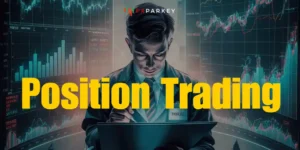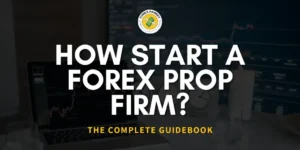Forex trading, also known as foreign exchange trading, is the process of buying and selling currencies in the global marketplace Forex (FX) is a portmanteau of the words foreign [currency] and exchange. FX trading is the conversion of one currency into another.
Foreign exchange is the process of changing one currency into another for various reasons, usually for commerce, trading, or tourism.
![What is Forex Trading? Complete Guide on Forex [2025 Edition] 1 Forex Trading](https://fxparkey.com/wp-content/uploads/2024/01/Forex-Trading-1-1.webp)
FX is one of the most actively traded markets in the world, with individuals, companies, and banks carrying out around $6.6 trillion worth of forex transactions every single day and it is the world's largest and most liquid asset market.
The forex market is open 24 hours a day, five days a week, except for holidays. The forex market is open on many holidays on which stock markets are closed, though the trading volume may be lower.
Key Takeaways
What is Forex?
![What is Forex Trading? Complete Guide on Forex [2025 Edition] 2 Forex](https://fxparkey.com/wp-content/uploads/2024/01/Forex.webp)
The foreign exchange (forex or FX) market is a global decentralized or over-the-counter (OTC) market for the trading of currencies. It is the largest and most liquid asset market in the world, with trading conducted electronically.
The forex market includes the spot, forwards, and futures markets, where participants can buy, sell, exchange, and speculate on the relative exchange rates of various currency pairs. Currencies are always traded in pairs, and the value of one currency in the pair is relative to the value of the other.
The market is open 24 hours a day, five days a week, and it is made up of a global network of financial centers. The forex market is not dominated by a single market exchange, but a global network of computers and brokers from around the world. Forex brokers act as market makers as well and may post bids and ask prices for a currency pair that differs from the most competitive bid in the market.
How does the Forex Market operate?
![What is Forex Trading? Complete Guide on Forex [2025 Edition] 3 Forex Market](https://fxparkey.com/wp-content/uploads/2024/01/Forex-Market-1.webp)
Foreign exchange, or FOREX traders speculate on changing exchange rates by converting large sums of money from currency to currency, much like stock traders buy and sell different stocks.
Forex traders essentially attempt to buy low and sell high for a profit, but the asset they are trading is currency.
The foreign exchange market, also known as Forex or FX, is an over-the-counter (OTC) global marketplace that determines the exchange rate for global currencies.
It is the largest financial market in the world, with trillions of dollars changing hands each day. The forex market is made up of three main markets: the spot forex market, the forward forex market, and the futures forex market.
Currencies are always traded in pairs, and each currency in a pair is represented by a unique three-letter code. The first two letters in the code represent the country, and the third letter identifies the currency.
Forex trading is the simultaneous act of buying one currency while selling another. The combination of these two currencies makes up what's known as a currency pair. Forex prices are known as rates, and they are determined by supply and demand.
The forex market is open 24 hours a day, five days a week, and is made up of banks, forex dealers, commercial companies, central banks, investment management firms, hedge funds, retail forex dealers, and investors.
Forex trading can be profitable, but it is not without risks and requires effective risk management, a solid understanding of the forex market, and continuous learning and adaptation.
Size and Scope of the Global Forex Market
The global foreign exchange market size reached US$ 805 Billion in 2023. Looking forward, IMARC Group expects the market to reach US$ 1,466 Billion by 2032, exhibiting a growth rate (CAGR) of 6.92% during 2024-2032.
The global foreign exchange (FX) market is the largest and most liquid market in the world, with a turnover of $7.5 trillion per day in April 2022. The market determines foreign exchange rates for every currency and includes all aspects of buying, selling, and exchanging currencies at current or determined prices.
The global FX market size was valued at $8.95 billion in 2022 and is predicted to reach $17.93 billion by the year 2031.
How values are Quoted and Traded?
![What is Forex Trading? Complete Guide on Forex [2025 Edition] 4 Currency pairs exchange](https://fxparkey.com/wp-content/uploads/2024/01/exchange-currency.webp)
Currency pairs are the national currencies of two countries coupled for trading on the foreign exchange (FX) marketplace. Both currencies will have exchange rates on which the trade will have its position basis.
All trading within the forex market, whether selling, buying, or trading, will take place through currency pairs. Trading currency pairs involves the simultaneous buying of one currency and selling of another. A currency pair is the quotation of two different currencies, with the value of one currency being quoted against the other.
The first listed currency is called the base currency, and the second currency is called the quote currency. For example, in the pair EUR/USD, the euro is the base currency, and the US dollar is the quote currency.
When trading a currency pair, if you buy the pair, you are buying the base currency and selling the quote currency, and if you sell the pair, you are selling the base currency and receiving the quote currency. Currency pairs are quoted based on their bid (buy) and ask (sell) prices, and their exchange rates continually fluctuate based on various factors.
Trading currency pairs is conducted in the foreign exchange market, also known as the forex market, and it is the largest and most liquid market in the financial world. The quoted stock prices are displayed on an electronic ticker tape, which displays the up-to-the-minute market price and trading volume information. The quoted price is the most up-to-date deal between buyers and sellers, or the bid and asks prices.
Technological Advancements in Forex Trading
![What is Forex Trading? Complete Guide on Forex [2025 Edition] 5 Educational Resources and Technological Innovation](https://fxparkey.com/wp-content/uploads/2024/08/BhNlC_3vQMKDOhkHE-k9hg.webp)
Forex trading has been at the forefront of technological advancements in the financial sector.
Online trading platforms, algorithmic trading, and real-time data analysis has revolutionized the way traders operate, fostering innovation and efficiency across the financial industry.
Technology has played a crucial role in the development and growth of the forex market, making the process of trading currencies significantly easier and more efficient Some of the key benefits of technology in forex trading include:
Fundamental Analysis Vs Technical Analysis
Fundamental analysis and technical analysis are two primary methods used in forecasting the future price movements of financial assets, but they approach this task from different angles.
![What is Forex Trading? Complete Guide on Forex [2025 Edition] 6 Fundamental Analysis](https://fxparkey.com/wp-content/uploads/2024/01/Fundamental-Analysis-1.webp)
Fundamental analysis involves evaluating a security's intrinsic value by examining related economic, financial, and other qualitative and quantitative factors. It focuses on the overall state of the economy, the strength of the specific industry, and the financial performance of the company issuing the stock. This method is particularly useful for long-term investment strategies as it tries to determine an asset's true value.
![What is Forex Trading? Complete Guide on Forex [2025 Edition] 7 Technical Analysis](https://fxparkey.com/wp-content/uploads/2024/01/Technical-Analysis-1.webp)
On the other hand, technical analysis is a trading discipline employed to evaluate investments and identify trading opportunities by analyzing statistical trends gathered from trading activity, such as price movement and volume. It operates on the assumption that past trading activity and price changes of security can be valuable indicators of the security's future price movements. This method is often used to generate short-term trading signals.
While both methods are used for researching and forecasting future trends in asset prices, they serve different purposes and are often used in conjunction with each other for a more comprehensive view. Fundamental analysis is typically used for making long-term investment decisions, while technical analysis is more commonly used for short-term trading.
Forex Terminologies You Might Wanna Know About
Forex trading, like any specialized field, has its own unique set of terminologies. Understanding these terms is crucial for both beginners and seasoned traders.
👉 Check out the complete Forex Glossary to know about 100+ Forex Terminologies.
Here are 20 common forex terminologies and their definitions:
| Term | Definition |
|---|---|
| Currency Pair | The quotation of two different currencies, where one is quoted against the other. |
| Base Currency | The first currency in a currency pair. |
| Quote Currency | The second currency in a currency pair. |
| Exchange Rate | The rate at which one country’s currency can be exchanged for another. |
| Bid Price | The price at which a trader is willing to sell a currency. |
| Ask Price | The lowest price at which a trader is willing to buy a currency. |
| Spread | The difference between the bid price and the ask price. |
| Pip | The smallest price movement any exchange rate can make. |
| Lot | The standard unit size of a transaction. |
| Leverage | The use of borrowed capital to increase the potential return of an investment. |
| Margin | The amount of money required in your account to maintain your market positions. |
| Long Position (Buy) | A situation where a trader purchases an asset with the expectation that its market value will rise. |
| Short Position (Sell) | A situation where a trader sells an asset with the expectation that its market value will fall. |
| Technical Analysis | A trading discipline that seeks to identify trading opportunities by analyzing statistical data gathered from trading activity. |
| Fundamental Analysis | A method of evaluating the markets that uses multiple data sources to find an asset's fair value. |
| Day Trading | Short-term trades in which positions are held and liquidated on the same day. |
| Swing Trading | A trading strategy where the trader holds the position for a period longer than a day. |
| Position Trading | A trading strategy where the trader holds the currency for a long period |
| Forex Account | An account that allows you to trade currencies. |
| CFDs | A financial contract that pays the differences in the settlement price between the open and closing trades. |
Most Common Forex Terminologies
![What is Forex Trading? Complete Guide on Forex [2025 Edition] 8 Forex Terminologies](https://fxparkey.com/wp-content/uploads/2024/01/Forex-Terminologies-1.webp)
Pips
In forex trading, a pip, short for “percentage points,” is the smallest incremental move that a currency pair can make It is a standardized unit measuring a change (both gains and losses) of a currency pair in the forex market and is worth 1/100th of one cent on most exchanges. Pips are essential for forex traders to calculate profits and losses when dealing with forex trading.
Lots
A “lot” is a unit of measurement that represents the transaction amount, or the number of currency units you will buy or sell. The standard size for a lot is 100,000 units of currency, and there are also smaller lot sizes called mini, micro, and nano, which are 10,000, 1,000, and 100 units, respectively. These lot sizes are used to enable traders to trade small movements in large batches.
Margin
In the world of forex, online trading in forex markets has made it easier for traders to enter currency markets in great numbers. The aspect of margin trading in foreign exchange markets has made it even more appealing to traders to enter these markets. In trading parlance, the margin refers to the monetary deposit that a trader makes to enter a position and maintain it.
If you trade on a margin, you stand to get the complete exposure the market affords by providing only a fraction of the full value of any trade. This is related to a maintenance margin, which is the capital that has to be available in your trading account to fund the current value of your position.
Leverage
Leverage is a tool used by traders that enables them to control a large amount of capital by putting down a much smaller amount. Unlike traditional investing, where you must tie up the full value of your position, with leveraged trading you only have to put up a smaller portion, known as margin.
Understanding Tradeable Assets in Forex Trading
The following table provides a comprehensive list of major, minor, and exotic currency pairs, along with the metals and indices traded in the forex market:
| Category | Pairs |
|---|---|
| Major Currency Pairs | EUR/USD, USD/JPY, GBP/USD, USD/CHF, AUD/USD, USD/CAD, NZD/USD |
| Minor Currency Pairs | EUR/GBP, EUR/AUD, GBP/JPY, CHF/JPY, EUR/JPY, EUR/GBP, EUR/CHF, CAD/JPY, AUD/JPY, GBP/CHF, GBP/NZD |
| Exotic Currency Pairs | USD/ZAR, EUR/SEK, USD/SGD, EUR/TRY, GBP/BRL, SGD/EUR, USD/THB, EUR/TRY, GBP/ZAR, USD/HKD |
| Metals | Gold, Silver, Platinum, Palladium |
Please note that the liquidity and trading volumes for these pairs can vary significantly. Major pairs are the most liquid and have the highest trading volumes, while exotic pairs are less liquid and have wider spreads. Minor pairs fall somewhere in between. Metals are traded as pairs with major currencies, and their trading volumes can also vary.
FAQs Related to Forex Trading
What are the major Forex Market hours?
What is leverage in Forex Trading?
What are the most Traded Currency Pairs in Forex?
How can I Start Trading Forex?
What is a Forex Broker?
A Forex broker is a firm that provides traders access to a platform for buying and selling foreign currencies. They act as an intermediary between the retail trader and the interbank system.
What is a Spread in Forex Trading?
The spread is the difference between the buy (ask) and sell (bid) price of a currency pair. It's essentially the broker's commission for executing the trade.
Can I Trade Forex on weekends?
The Forex market is closed to retail traders over the weekend, but it opens again when the Asian market starts on Monday morning (Sunday evening in the U.S.).
What is Technical Analysis in Forex Trading?
Technical analysis is a trading discipline used to evaluate investments and identify trading opportunities by analyzing statistical trends gathered from trading activity.
What is Fundamental Analysis in Forex Trading?
Fundamental analysis is a method of evaluating a security in an attempt to measure its intrinsic value, by examining related economic, financial, and other qualitative and quantitative factors.
End Note
And there you have it, folks – the wide world of Forex trading in a nutshell! From major currency pairs to exotic crosses, technical analysis to fundamental drivers, this market offers opportunities galore for traders of every style and skill level. Just remember, with great potential reward comes great risk – leverage cuts both ways!
So start small, learn the ropes on a practice account, and keep those stop losses tight. The Forex rollercoaster awaits; buckle up and enjoy the ride! But don't forget to plan your exits along the way – no one wants to end up back at the start after coming so far!
Trade wise my friends. Here's to profitable pips!🥂






![Equity in Forex Trading 📖 Forex Glossary [2025 Edition] 14 Equity](https://fxparkey.com/wp-content/uploads/2024/04/Equity-300x189.webp)
